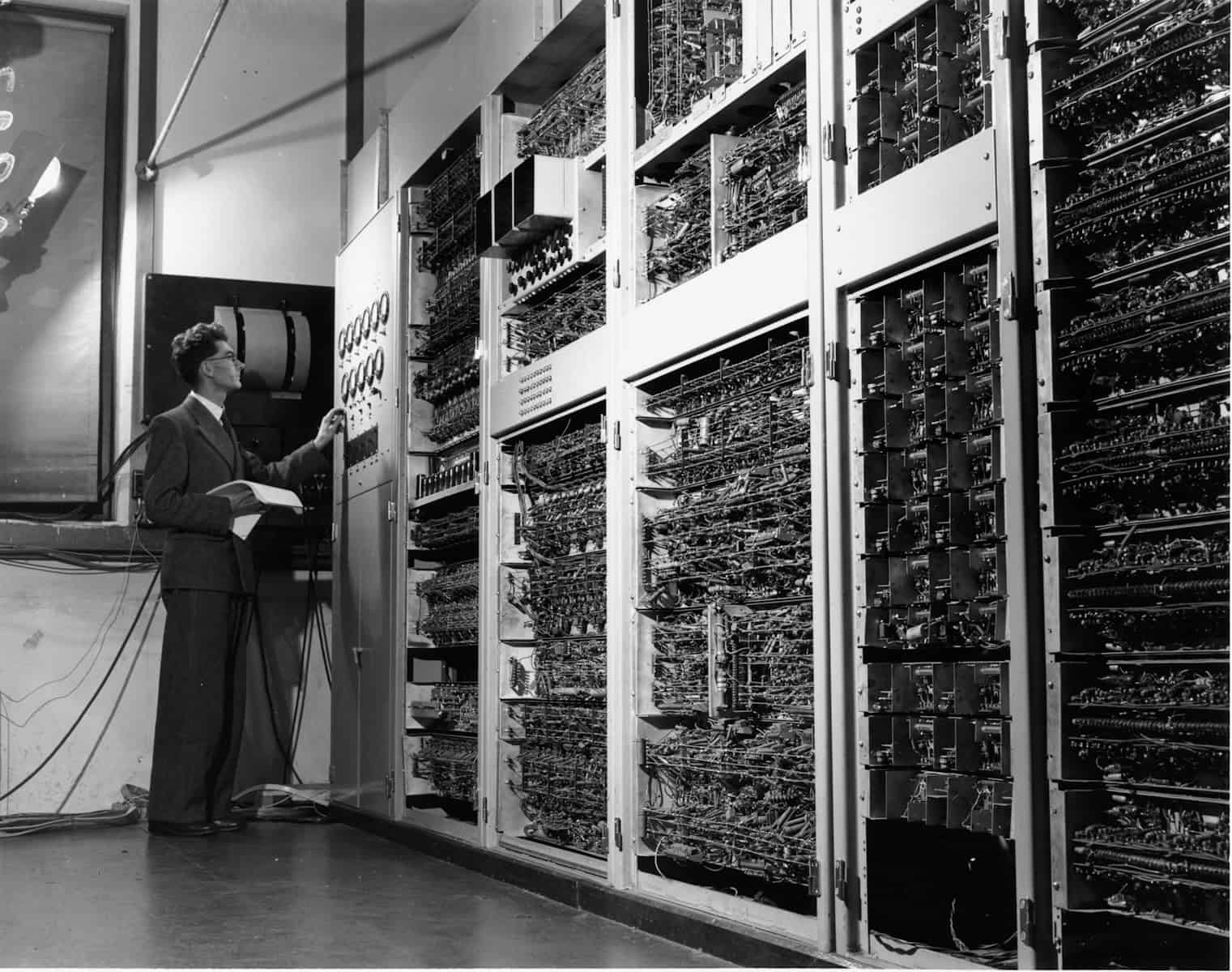The history of computers shows how they have changed over time. Early computers were very big and used vacuum tubes. Then, smaller and more efficient computers were built using transistors and later integrated circuits. After that, microprocessors were developed, which led to the personal computer. Each new generation of computers has been faster, more powerful, and smaller.
Today’s computers are much smaller and more powerful than the early computers. They are getting even more advanced and are likely to become even smaller and more powerful in the future. Newer computers will likely use artificial intelligence and machine learning to be more personalized and intelligent. This means that computers may become more independent and even more important in our daily lives.
The Changing Landscape of Computing Technology
Computers have come a remarkably long way since their humble beginnings. Here’s a look at the distinct generations of computers and how they transformed our world:
First Generation Computers (1940-1956)

Key Characteristics
- Bulky and Power-Hungry: First-generation computers were enormous, often filling entire rooms. They relied on vacuum tubes, which consumed massive amounts of electricity and generated excessive heat.
- Machine Language: Programming was incredibly complex, requiring direct coding in machine language (binary).
- Limited Applications: These early computers were mainly used for scientific calculations and military purposes.
Notable Examples
| Computer | Year Developed |
|---|---|
| ENIAC (Electronic Numerical Integrator and Computer) | 1945 |
| EDVAC (Electronic Discrete Variable Automatic Computer) | 1949 |
| UNIVAC I (Universal Automatic Computer I) | 1951 |
Second Generation Computers (1956-1963)

Key Characteristics
- The Transistor Revolution: Transistors replaced bulky vacuum tubes, making computers smaller, faster, more reliable, and less power-hungry.
- Emergence of High-Level Languages: Programming became somewhat easier with the introduction of high-level languages like FORTRAN and COBOL.
- Business Applications: Businesses started adopting computers for tasks like inventory management and payroll processing.
Notable Examples
| Computer | Year Developed |
|---|---|
| IBM 7090 | 1959 |
| CDC 1604 | 1960 |
| IBM 1401 | 1960 |
Third Generation Computers (1964-1971)

Image Credit: https://www.flickr.com/photos/27572989@N02/15871523354
Key Characteristics
- Integrated Circuits: The invention of integrated circuits (ICs), packing numerous transistors onto tiny silicon chips, further revolutionized size and efficiency.
- Operating Systems: Introduction of operating systems provided a user-friendly interface and improved resource management.
- Multi-purpose Use: Computers became accessible for broader applications beyond scientific and business use.
Notable Examples
| Computer | Year Developed |
|---|---|
| IBM System/360 | 1964 |
| PDP-8 | 1965 |
| PDP-11 | 1970 |
Fourth Generation Computers (1972-2021)

Key Characteristics
- The Microprocessor Age: Microprocessors, with thousands of ICs on a single chip, enabled truly personal computers.
- Graphical User Interface: The GUI revolutionized user interaction with computers.
- Widespread Networking: Networking and the development of the internet brought about global connectivity.
Notable Examples
| Computer | Year Developed |
|---|---|
| Apple II | 1977 |
| IBM PC | 1981 |
| Apple Macintosh | 1984 |
Fifth Generation Computers (2022 and Beyond)

Key Characteristics
- Focus on Artificial Intelligence (AI): The emphasis shifts to developing computers that can learn, reason, and adapt like humans.
- Quantum Computing: Harnessing quantum mechanics for vastly improved processing power.
- Natural Language Processing: Computers capable of understanding and interacting using everyday language.
Let me know if you’d like to explore any of these generations in more detail!
Key Takeaways
- The generations of computers mark the major milestones in their technological development.
- Each new computer generation brought improvements in speed, efficiency, and size.
- Artificial intelligence is becoming a defining feature of modern computers, indicating a future of increasingly autonomous and integrated devices.
Evolution of Computer Generations
The evolution of computer generations marks significant leaps in technology from bulky, room-sized machines to the sleek and powerful devices we use today.
First and Second Generations
First Generation computers (1940-1956) used vacuum tubes and were the size of entire rooms. They relied on punch cards for input and magnetic drums for memory. The ENIAC and UNIVAC are early examples. Machines then could only solve one problem at a time. They used a lot of power and gave off heat.
In the Second Generation (1956-1963), transistors replaced vacuum tubes, leading to smaller, faster, and more reliable computers. The IBM 1401 and others used magnetic core for memory and could store much data. These computers started to run on assembly language and high-level languages like FORTRAN and COBOL, widening their use.
Third and Fourth Generations
The Third Generation (1964-1971) saw the rise of integrated circuits (ICs), packing multiple transistors on a single silicon chip. Computers like the IBM 360 and PDP-11 offered more intense process speeds, better performance, and the start of true operating systems. The microprocessor emerged, shrinking the CPU down to a single chip, which was a huge leap.
By the Fourth Generation (1971-present), microprocessors powered personal computers. The IBM PC, desktops, and laptops became household items. Memory and performance continued to improve, and computer networks began to connect people worldwide. With each advancement, the goal was the same: to make computers faster, smaller, and more capable.
Modern and Future Developments
The future of computing is marked by powerful innovations, stemming from the fifth generation of computers and extending to forthcoming technologies that continue to reshape our interaction with machines.
Fifth Generation and Beyond
The fifth generation of computers has been defined by the integration of artificial intelligence (AI) and advancements in natural language processing. These computers can understand spoken words and respond in kind. They learn from data, identify patterns, and make decisions with minimal human input. Smartphones and tablets are prime examples of fifth-generation technology, with capabilities far beyond simple voice recognition. They connect to the internet and manage a wide array of tasks through apps and services.
As we look beyond, quantum computing and nanotechnology are poised to revolutionize computing. Quantum computers, still in the development phase, promise to perform complex calculations at speeds unachievable by current supercomputers. Their ability to handle vast amounts of data can lead to significant breakthroughs in fields like medicine and science.
Meanwhile, nanotechnology is likely to further miniaturize devices while enhancing their efficiency and power. Future generations of computers may self-organize, reconfigure, and repair, making them more adaptive to user requirements and environmental changes.
The network that connects these devices is constantly expanding, enabling more efficient and seamless communication between machines worldwide. This rapid progress ensures that the future of computing is not only promising but likely to be integral to every aspect of daily life.
Frequently Asked Questions
This section answers common queries about computer generations, focusing on their characteristics, evolution, and technological advancements.
What are the distinguishing characteristics of each computer generation?
Each generation of computers is marked by distinctive technological strides. The first used vacuum tubes and was quite bulky. The second generation saw the introduction of transistors which made computers smaller and faster. Integrated circuits were the hallmark of the third generation, paving the way for more compact and efficient machines. The fourth generation introduced microprocessors, leading to personal computers. The present fifth generation focuses on artificial intelligence and quantum computing.
Can you describe the evolution of computers from the first to the fifth generation?
The evolution of computers began with the massive, slow vacuum tube computers of the first generation in the 1940s and 1950s. Transistors from the second generation shrank computers and boosted speed. The third generation brought integrated circuits, multiplying computing power and efficiency. Microprocessors characterized the fourth generation, enabling the rise of personal computing. The current fifth generation explores artificial intelligence, aiming for smarter and more autonomous machines.
What are the key advancements and technologies introduced in the second generation of computers?
The second generation of computers was notable for replacing vacuum tubes with transistors. This change resulted in computers that were less heat-generative, more energy-efficient, and smaller. It also introduced magnetic drums for memory, enhancing data storage capabilities.
What are the main features of third, fourth, and fifth generation computers?
Third generation computers were smaller and more powerful, using integrated circuits and enabling widespread commercial use. Fourth generation computers have microprocessors and increased portability, typified by laptops and smartphones. Fifth generation computers strive for advancements in artificial intelligence and quantum computing, making them highly capable of handling complex tasks with minimal human intervention.
In the context of computer generations, where do current computing technologies fit?
Current computing technologies largely belong to the fifth generation, emphasizing machine learning, artificial intelligence, and quantum computing. These technologies focus on achieving higher levels of autonomy and problem-solving capabilities.
How have the changes in computer generations impacted computing power and efficiency?
As computers transitioned through the generations, their power and efficiency have dramatically increased. Each generation introduced breakthroughs that allowed faster processing, improved storage, and better data management. From cumbersome machines filling entire rooms to sleek devices fitting in the palm of a hand, these shifts have revolutionized the way computers serve society.







